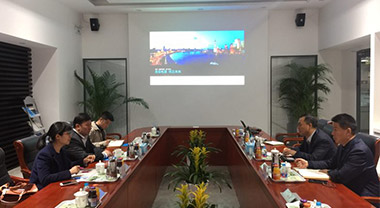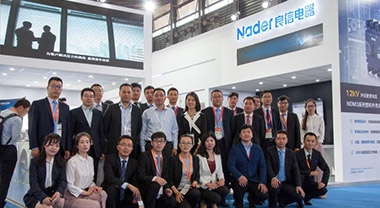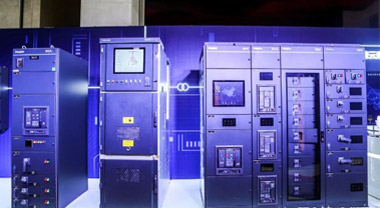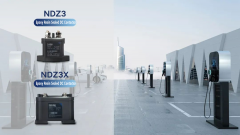Nader NDZ3 series contactor, Born for New Energy
By:Nader Updated:October 16,2020 20:13PM

Nader NDZ3 series contactor is mainly used in the industries of electric vehicles, charging piles, and charging stations. The advanced automated production line ensures its excellent quality; the low-power electromagnetic system design makes it more energy-saving; the ceramic and epoxy resin seal ensures more reliable and more Long service life..


- Nader NDZ3 series contactor basic information
- How is Nader NDZ3 series contactor produced?
-
Why choose Nader NDZ3 series contactor?
- Low power consumption electromagnetic system design, more energy saving
- Gas medium arc extinguishing in the sealed cavity
- Built-in auxiliary contacts
- Ceramic arc extinguishing parts design
- Non-polarity design, more suitable for occasions such as charging and discharging
- Structure design of strong magnetic blow-out arc
- Which fields can the Nader NDZ3 series contactor be applied to?
- Nader NDZ3 series contactor final recommendation
Nader NDZ3 series contactor basic information
NDZ3 (X, W, S) series epoxy sealed DC contactors are suitable for DC systems with working voltage up to DC1000V and working current up to 300A. We mainly work in electric vehicles, charging piles, and photovoltaic industries.
NDZ3(A)T series ceramic sealed DC contactors are suitable for DC systems with working voltage up to DC750V and working current up to 400A. We mainly work in electric vehicles, charging piles, and charging stations industries.
How is Nader NDZ3 series contactor produced?
Nader Liangxin—— This is our home, but we are from a famous family and have a good education; our home has complete advanced production technology and equipment, a fully enclosed dust-free workshop, to ensure that the parts are clean, and the annual production capacity of the automatic production assembly and testing line is up to 700,000 pieces. Special equipment for sealing gas filling and leak detection ensures the gas pressure value, and the arc chamber sealing laser and brazing make the welding more sealed and reliable.

Nader automated production workshop

Nader NDZ3 series contactor automatic production line

Welding of NDZ3T contactor arc chamber in Nader clean workshop
Why choose Nader NDZ3 series contactor?
NDZ3 series contactors pay close attention to customers' special DC application scene requirements, polish the details with ingenuity, continuously improve product performance, and help customers increase commercial value.
Features of Nader NDZ3 series contactor:
- Low power consumption electromagnetic system design, more energy saving
- Gas medium arc extinguishing in the sealed cavity
- Built-in auxiliary contacts
- Ceramic arc extinguishing parts design
- Non-polarity design, more suitable for occasions such as charging and discharging
- Structure design of strong magnetic blow-out arc
Low power consumption electromagnetic system design, more energy saving
For DC contactors above 150A, the coil part of the electromagnetic system adopts the design of electronic circuit board and coil winding, which can achieve low power consumption or wide voltage; for example, the NDZ3-150J-300 DC contactor maintains power consumption of 3.6W, The wide voltage range is DC9-36V; NDZ3T-200-300 DC contactor maintains a power consumption of 4.5W.

Low-power electromagnetic system design
Gas medium arc extinguishing in the sealed cavity
The arc extinguishing chamber of the DC contactor is filled with the arc extinguishing medium hydrogen or nitrogen, or a certain proportion of mixed gas, sealed in the arc extinguishing chamber and maintained at a specified pressure; the gas molecule has a higher ionization energy, which is beneficial to the gas molecules in The de-ionization under high temperature or electric field can quickly extinguish the arc.
Built-in auxiliary contacts
The NDZ3 (X, W, S) series DC contactors have a structural design with auxiliary contacts, which can output signals and detect whether the main contacts are stuck. The principle is: install a micro switch inside the DC contactor as an auxiliary contact, and control the micro switch at the same time by controlling the active contact bracket of the DC contactor. When the main contact of the DC contactor is stuck (cannot be separated) , The micro switch outputs a signal.

Auxiliary contact
Ceramic arc extinguishing parts design
Generally, the DC contactor usually uses nylon arc extinguishing chamber, which is easy to be carbonized or burned through by the arc. At the same time, the thermal conductivity of the plastic is not good, and the heat generated by the arc cannot be dissipated, which leads to prolonged arc extinguishing time and ultimately affects the electrical performance of the product.
Nader’s design uses ceramic arc extinguishing parts on both sides of the arc extinguishing chamber to improve the heat dissipation effect. At the same time, the cross ribs are added to the arc extinguishing parts to cut the arc and also improve the arc extinguishing effect. Finally, the DC contactor is improved. Electrical life and breaking capacity.

Ceramic arc extinguishing parts
Non-polarity design, more suitable for occasions such as charging and discharging
The main contact of NDZ3W-50-300 series DC contactor is a series of products with non-polarity design. Users do not need to consider product polarity when wiring. This product is more suitable for occasions such as charging and discharging.

Simulation diagram of magnetic blowing and arc extinguishing of non-polar DC contactor

Schematic diagram of charge and discharge of new energy vehicles
Structure design of strong magnetic blow-out arc
The entire series of DC contactors adopt a strong magnetic blow-out arc structure design, which improves the electrical life of the DC contactor; for example, the NDZ3X-300 DC contactor has an electrical life of DC750V for more than 1000 times.

Which fields can the Nader NDZ3 series contactor be applied to?
In terms of work ability, we are born to ensure the safe and reliable operation of new energy storage and use. The brothers and sisters of the NDZ3 series contactors perform their duties, from the energy storage side of the power generation end to the power consumption side of the user end, and carry out all-round protection .
Typical application of Nader NDZ3 series contactor
- Photovoltaic system
- New energy charging pile
- new energy vehicles
Photovoltaic system
In the event of a fault, the safety of the system can be ensured by cutting off the DC line; during maintenance, remote control can be implemented to reduce maintenance costs.

New energy charging pile
For DC charging piles, the DC contactor is installed at the front end of the charging gun, which is used to switch the circuit, especially to disconnect the charging gun in the event of a fault or emergency.

new energy vehicles
The battery pack PACK generally requires 2-4 DC contactors, and the power distribution box PDU generally requires 6-8 DC contactors.

The DC contactor plays a role of charging and discharging and controlling when the new energy vehicle starts and stops. In the event of a fault, it can disconnect the charger from the battery, the battery and the load; the MCU is a capacitive load and has a precharge circuit, which can avoid large Current impact.
Nader NDZ3 series contactor final recommendation
Nader NDZ3 series contactor provides reliable basic electricity services for electric vehicles, charging piles, and photovoltaic industries, ensuring excellent product quality through advanced management, rigorous product design, advanced automated production technology, and strict product testing;




